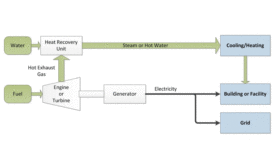Home » Keywords: » waste heat
Items Tagged with 'waste heat'
ARTICLES
CHP: Old Technology Sparks a New Interest in HVAC Industry
These projects are sustainable in more ways than one
Read More
Thermoelectric Generators to Exceed $715.8 Million
To grow to USD 715.8 million by 2022
June 16, 2017
Many Industries Using CHP to Improve Energy Efficiency
It’s a way to reduce wasted heat and increase industrial efficiency
December 19, 2016
Heat Exchanger Market to Grow to $21.3 Billion by 2022
Emerging trends have a direct impact on the dynamics of the industry
December 15, 2016
McKinstry Wins 2016 CleanTech Achievement Award
Honored for making significant contributions in developing the region’s cleantech industry
November 23, 2016
Waste Heat Recovery Market Worth $65.87 Billion by 2021
Steam and electricity generation is a significant application
October 19, 2016
Copyright ©2024. All Rights Reserved BNP Media.
Design, CMS, Hosting & Web Development :: ePublishing






